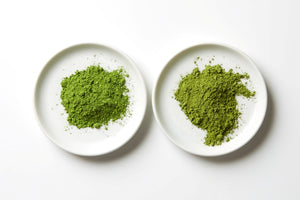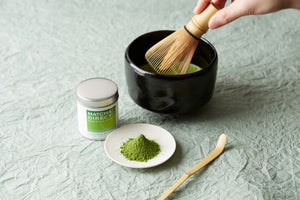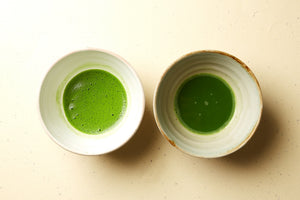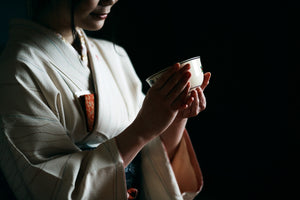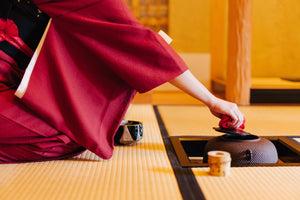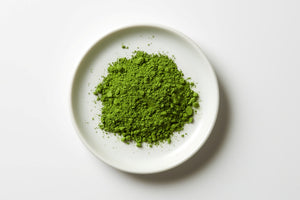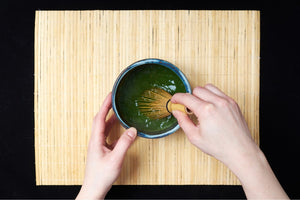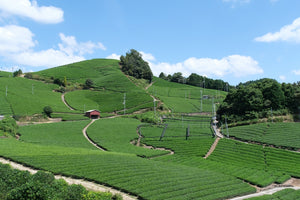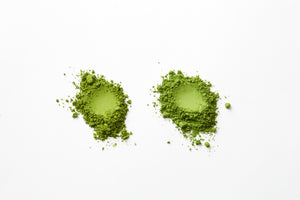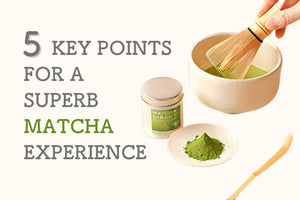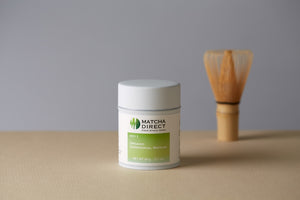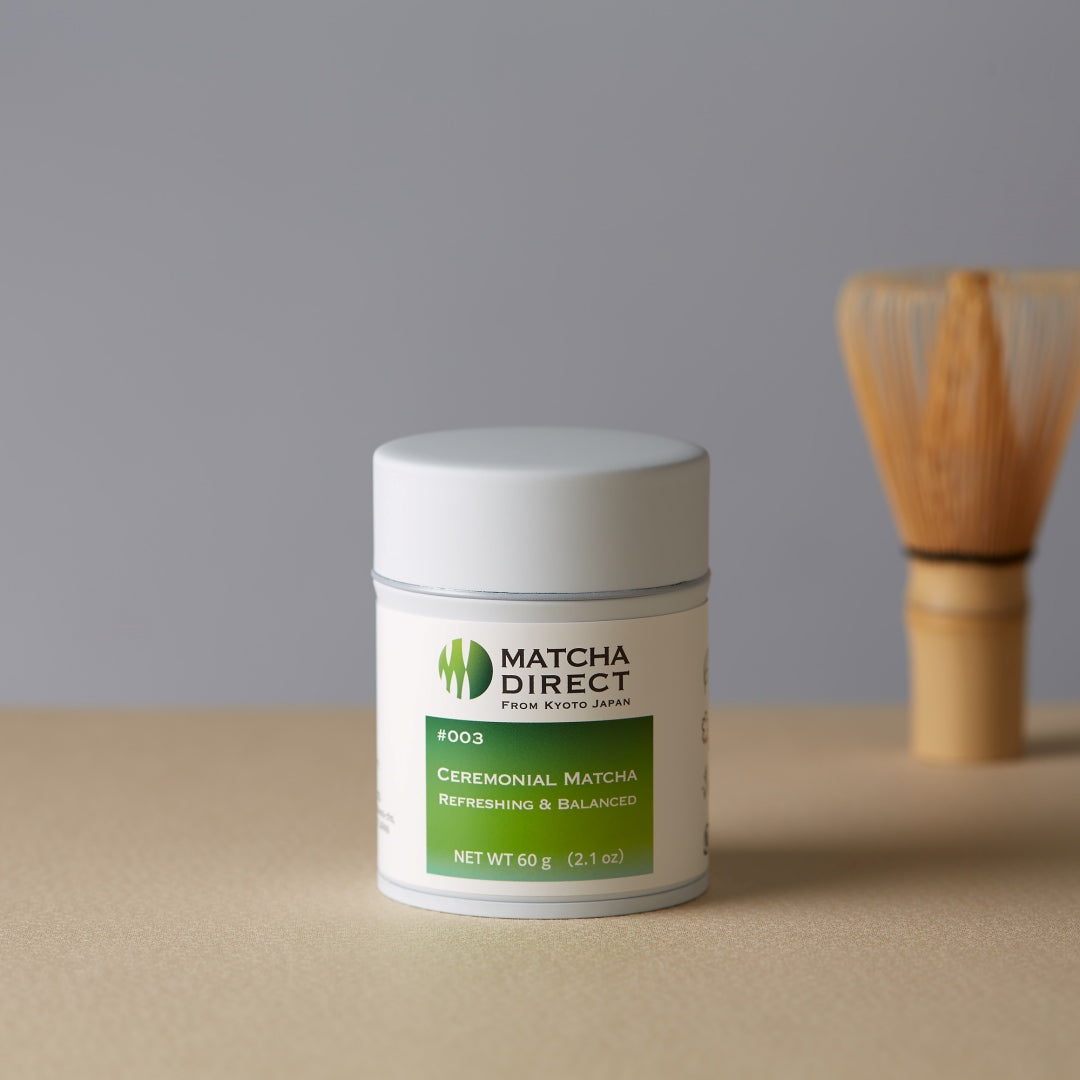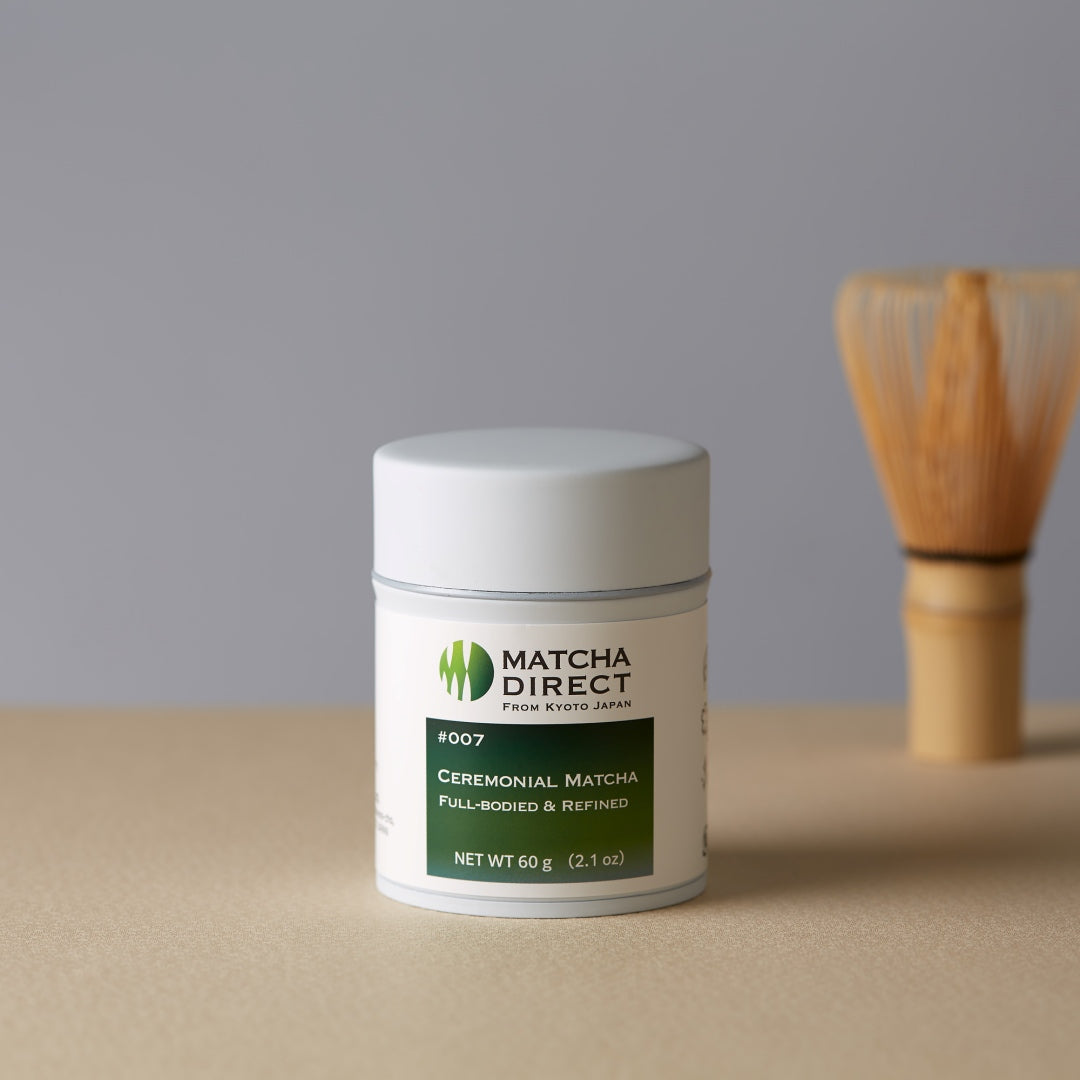Why Is Matcha So Expensive?
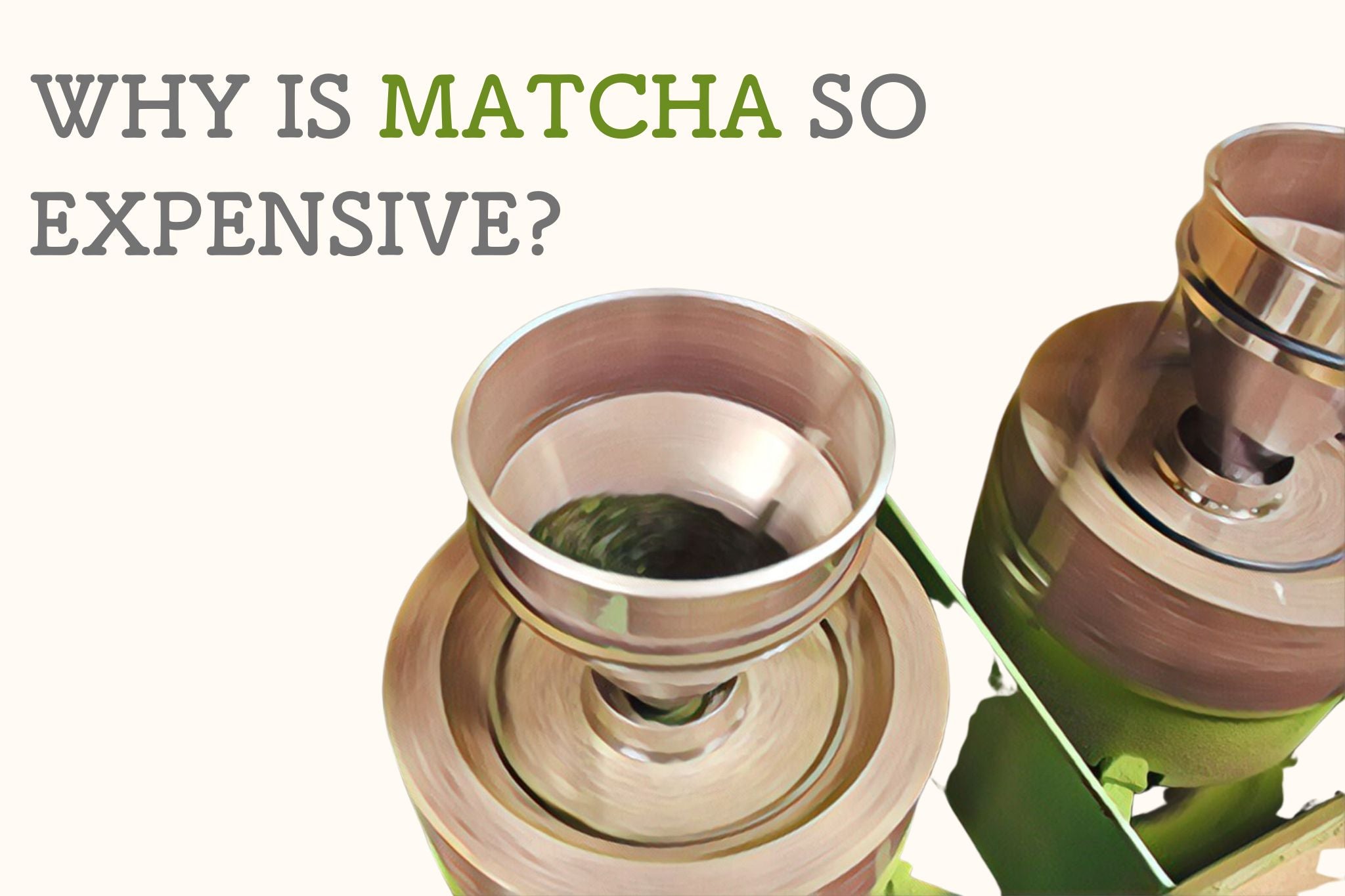
Have you ever wondered “Why is matcha so expensive?” when you searched for matcha on an online store or picked it up in a shop?
Even in Japan, matcha can feel quite costly. Many Japanese people, even those living in matcha-producing areas, have never purchased it.
Recently, organic matcha has become more common, but organic matcha made using traditional methods can be even more expensive. On the other hand, more affordable products are also available.
What exactly are the differences in taste and quality between these products? And why is high-quality matcha so expensive? Let's explore these mysteries by examining the cultivation and production methods.
Reasons Related to Growing Regions
Tea, a plant from the Camellia family, is cultivated in many countries, producing green tea, black tea, oolong tea, and more for people worldwide. Since matcha can be made wherever tea plants grow, it is no longer produced only in Japan. In response to the global popularity of matcha, countries like China, Taiwan, and South Korea have increased their matcha production.
Even with the rise of more affordable matcha, why do so many people around the world still choose the more expensive Japanese matcha? And why is the Japanese matcha everyone desires so expensive?
Matcha Is Grown in Limited Areas of Japan
When thinking of matcha production areas, Uji in Kyoto, Yame in Fukuoka, and Nishio in Aichi might come to mind first. Shizuoka and Kagoshima, mainly known for producing sencha, have also been increasing their matcha production.
Among these major production areas, Uji in Kyoto stands out for its long history and reputation both in Japan and abroad. In Uji, shaded cultivation, where tea plants are covered to block sunlight, began around the mid-16th century. The matcha produced there has long been favored by the powerful and elite.
Tea plants thrive in a warm and humid climate, needing an annual rainfall of 1300–1400 mm, with over 1000 mm required during the growing season from March to October. Additionally, when cultivating tencha, the raw material for matcha, tea plants must be shaded from sunlight during harvest. Shaded cultivation requires special techniques and management, with traditions passed down over hundreds of years. Therefore, it is difficult to produce tencha of the same quality in other regions. As a result, even within Japan, matcha is grown in limited areas, making it rare.
Differences from Chinese Matcha
China is the world's largest tea-producing country. Recently, with its vast tea cultivation areas, China has been focusing on matcha production across various regions. In fact, matcha originally came from China.
During the Song dynasty, a method of drinking tea by crushing dried tea leaves or compressed tea into powder was practiced. This method was transmitted to Japan by monks studying in China and was then emulated and further developed over time, evolving into Japan's unique cultivation techniques, manufacturing methods, and the tea ceremony culture.
One key development was the effort to enhance umami flavor, leading to the practice of providing ample fertilizer in matcha production. Additionally, tea leaves grown under shaded conditions to block sunlight expand their leaves to absorb light more efficiently, increasing chlorophyll content and producing vibrant green matcha.
According to a study analyzing 130 samples of matcha from Japan and abroad, Japanese matcha has a deeper green color and higher levels of L-theanine, an umami component, compared to Chinese matcha. Although matcha originated in China, Japan's matcha has evolved over centuries to improve quality, establishing its unique position today.
Scientific Characteristics of Matcha, which has been Gaining Attention as a Food Ingredient
Differences Due to Tea Leaf Quality
When it comes to high-quality matcha, ceremonial grade matcha is often cited. As the name suggests, "ceremonial grade" refers to matcha used in tea ceremonies. This grade usually involves using the most precious first flush of the tea leaves. Since tea ceremonies require matcha to be consumed straight, without milk or other additives, only the highest quality matcha with minimal bitterness and astringency is suitable.
Depending on the region, the first flush is harvested from April to May. Since this can only be harvested once a year during this period, it is extremely rare.
Reasons Related to Matcha Production Process
Tea Leaf Cultivation
To enrich tea leaves with theanine, tea plants for matcha are shaded from sunlight for about 20 days before harvest. In traditional cultivation methods, bamboo poles are erected in the tea fields, and reed screens called "yoshi" are used to block the light. If a higher level of shading is needed, straw is spread on top of the screens. These materials must be removed once the harvest season ends.
Today, materials like synthetic cloth are used instead of reed screens, and iron poles are used instead of bamboo, allowing them to remain in place throughout the year. Additionally, a simplified method called direct shading involves directly covering the tea plants with the cloth. However, even this method requires proper timing and control of shading, which adds to the labor and cost.
Tea Leaf Harvesting
Most tea leaves are now harvested using machines, but before the advent of these machines, people picked the leaves by hand. Some tea farms still harvest by hand today.
Machine harvesting is faster, but it cannot match the precision of handpicking, where only leaves of the same size are selected. Handpicking allows for selective harvesting of new buds and fresh leaves, minimizing the inclusion of older leaves and stems, which could compromise the matcha's flavor. Moreover, when tea leaves are uniformly sized, the subsequent processes, such as even roasting, are more precise, resulting in higher-quality matcha.
Sorting Process
After harvesting, the tea leaves are steamed to halt oxidation caused by enzymes in the leaves. The leaves are then dried using a special dryer called a "tencha roaster." Next, stems, veins, and impurities are removed, leaving only the soft parts of the leaves.
The result is tencha, which is ground into matcha powder.
Grinding the Matcha
Traditional matcha production involves grinding tencha slowly and carefully with a stone mill. However, a stone mill can only produce about 40 grams of matcha per hour. In today's fast-paced world, this might seem highly inefficient.
However, the texture and taste of matcha ground with a stone mill differ significantly from those produced with a grinder. Stone-milled matcha has a smoother, more melt-in-the-mouth feel, and its fine froth is considered superior. As a result, stone-milled matcha, increasingly replaced by machine-ground matcha, is becoming rarer.
Nutritional Value of Matcha
Tea leaves that have been shaded for about 20 days before harvest are rich in theanine, which is believed to have relaxing effects. When ground into matcha, the sweetness and umami of the theanine are more pronounced.
In addition to theanine, matcha contains catechins, vitamins, and minerals. Unlike sencha, where only the tea extract is consumed, matcha allows for the intake of various components that remain in the tea leaves, which do not dissolve in water.
Because of its rich nutritional profile, matcha is of great interest to health-conscious individuals, contributing to its high demand and price.
Reasons Related to Matcha Grades
The highest quality ceremonial grade matcha uses the first flush of new leaves, as mentioned earlier. Due to the labor-intensive cultivation and production processes, it is rare and highly valued.
Because ceremonial grade matcha is used in tea ceremonies and is considered the standard for matcha, many people associate all matcha with being premium and expensive.
However, more affordable matcha options do exist.
It's a good idea to have both daily matcha and special matcha on hand. For example, use ceremonial grade matcha for special occasions when guests visit, and daily grade or culinary grade matcha for smoothies, cooking, or daily health benefits.
Affordable, Fresh Matcha at "MATCHA DIRECT"
Matcha is carefully crafted to maintain high quality, and if it's Japanese-made, additional costs like shipping, duties, and taxes contribute to the price when sold overseas.
However, at MATCHA DIRECT, you can purchase matcha at a relatively lower price since there are no middlemen involved. Additionally, all products are shipped worldwide with free shipping.
Notably, matcha is ground and shipped only after an order is received, minimizing the degradation that starts as soon as matcha is ground.
Freshly ground matcha is vibrant green and exceptionally fresh.
Please enjoy this premium matcha in your own home.

